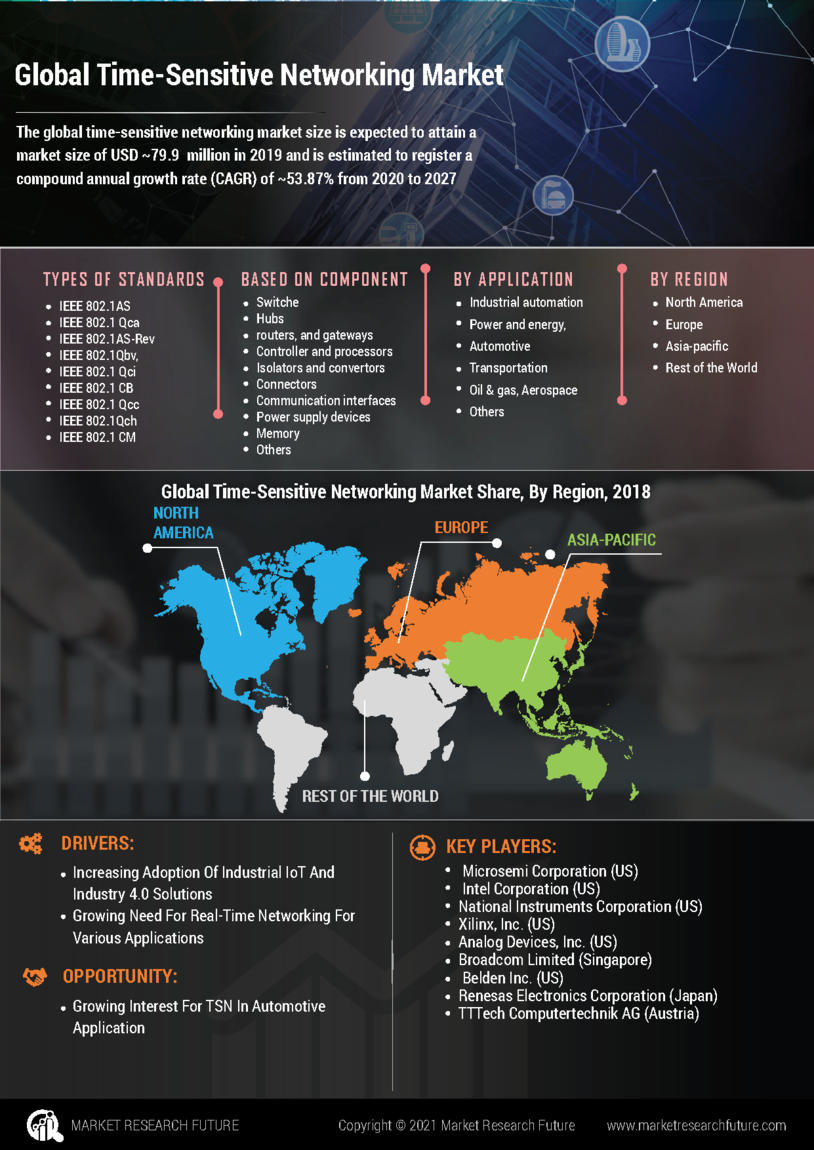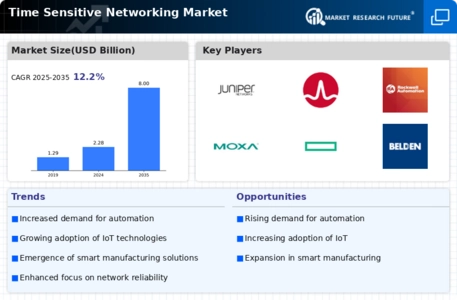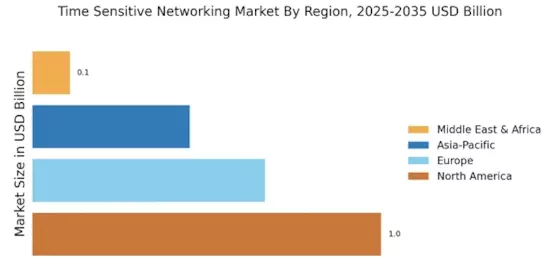Advancements in 5G Technology
The advent of 5G technology serves as a catalyst for the Time Sensitive Networking Market. With its promise of ultra-reliable low-latency communication, 5G networks are poised to transform various sectors, including healthcare, automotive, and entertainment. The global rollout of 5G is anticipated to create new opportunities for time-sensitive applications, such as remote surgeries and real-time gaming. Analysts predict that the 5G market will exceed 700 billion USD by 2026, further emphasizing the need for time-sensitive networking solutions that can support these advanced applications. Consequently, the synergy between 5G and time-sensitive networking is likely to drive substantial growth in the Time Sensitive Networking Market.
Integration of IoT and Smart Devices
The proliferation of Internet of Things (IoT) devices significantly influences the Time Sensitive Networking Market. As smart devices become ubiquitous across various sectors, the demand for seamless connectivity and low-latency communication intensifies. The market for IoT devices is expected to reach over 75 billion units by 2025, necessitating robust networking solutions that can handle the increased data traffic. Time-sensitive networking plays a crucial role in ensuring that these devices communicate effectively, particularly in applications such as smart cities and autonomous vehicles. This integration not only enhances user experience but also propels the growth of the Time Sensitive Networking Market.
Increased Focus on Automation and Robotics
The Time Sensitive Networking Market is significantly impacted by the growing emphasis on automation and robotics across various sectors. Industries such as logistics, manufacturing, and agriculture are increasingly adopting automated systems to enhance productivity and reduce operational costs. The Time Sensitive Networking is projected to reach approximately 300 billion USD by 2025, highlighting the need for efficient communication protocols that can support automated processes. Time-sensitive networking solutions are essential for ensuring that robotic systems operate in harmony, minimizing delays and maximizing efficiency. This trend underscores the critical role of time-sensitive networking in the evolving landscape of automation, thereby propelling the growth of the Time Sensitive Networking Market.
Rising Demand for Real-Time Data Processing
The Time Sensitive Networking Market experiences a notable surge in demand for real-time data processing capabilities. Industries such as manufacturing, telecommunications, and healthcare increasingly rely on instantaneous data transmission to enhance operational efficiency. For instance, the manufacturing sector is projected to witness a compound annual growth rate of approximately 15% in the adoption of time-sensitive networking solutions by 2026. This trend indicates a shift towards more interconnected systems that require low-latency communication. As organizations strive to optimize their processes, the need for reliable and timely data exchange becomes paramount, thereby driving the growth of the Time Sensitive Networking Market.
Emerging Applications in Smart Transportation
The emergence of smart transportation systems significantly influences the Time Sensitive Networking Market. As urban areas grapple with congestion and inefficiencies, the integration of time-sensitive networking solutions becomes vital for the development of intelligent transportation systems. These systems rely on real-time data exchange to optimize traffic flow, enhance safety, and improve overall user experience. The smart transportation market is expected to grow substantially, with projections indicating a value of over 200 billion USD by 2026. This growth necessitates robust networking solutions that can support the complex communication requirements of smart vehicles and infrastructure. Thus, the Time Sensitive Networking Market stands to benefit from the increasing focus on smart transportation initiatives.


















Leave a Comment